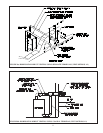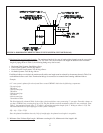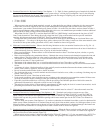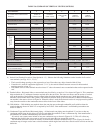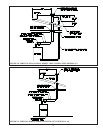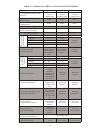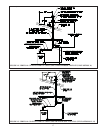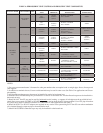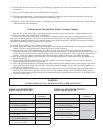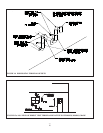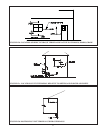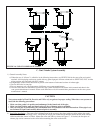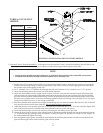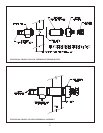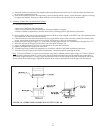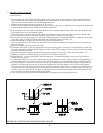
19
19
12) Vertical and horizontal sections of piping must be properly supported. See vent system manufacturer’s instructions for more
information.
13) Non-coaxial vent piping must be accessible for periodic inspection.
14) Fire stops and wall thimbles – Use fi re stops where required by code or by the vent system manufacturer. Consult vent
system manufacturer’s literature for information on suitable fi re stops.
15) Supports - Vertical and horizontal sections of vent pipe must be properly supported. See the Vent System assembly section
of this manual for more information.
B. Removing an Existing Boiler From a Common Chimney
Read this only if the CWD boiler is replacing an existing boiler that is being removed from a common chimney. This
section does not apply to the installation of a CWD boiler.
In some cases, when an existing boiler is removed from a common chimney, the common venting system may be too
large for the remaining appliances. At the time of removal of an existing boiler, the following steps shall be followed with
each appliance remaining connected to the common venting system placed in operation, while the other appliances remaining
connected to the common venting system are not in operation.
(a) Seal any unused openings in the common venting system.
(b) Visually inspect the venting system for proper size and horizontal pitch and determine there is no blockage or restriction,
leakage, corrosion and other defi ciencies which could cause an unsafe condition.
(c) Insofar as practical, close all building doors and windows and all doors between the space in which all the appliances
remaining connected to the common venting system are located and other spaces of the building. Turn on clothes dryers and
any appliance not connected to the common venting system. Turn on any exhaust fans, such as range hoods and bathroom
exhausts, so they will operate at maximum speed. Do not operate a summer exhaust fan. Close fi replace dampers.
(d) Place in operation the appliance being inspected. Follow the lighting instructions. Adjust thermostat so the appliance will
operate continuously.
(e) Test for spillage at the draft hood relief opening after 5 minutes of main burner operation. Use the fl ame of a match or
candle, or smoke from a cigarette, cigar, or pipe.
(f) After it has been determined that each appliance remaining connected to the common venting system properly vents when
tested as outlined above, return doors, windows, exhaust fans, fi replace dampers and any other gas-burning appliances to
their previous condition of use.
(g) Any improper operation of the common venting system should be corrected so the installation conforms with the National
Fuel Gas Code, ANSI Z223.1. When resizing any portion of the common venting system, the common venting system
should be resized to approach the minimum size as determined using the appropriate tables in Part 11 of the National Fuel
Gas Code, ANSI Z223.1.
TABLE 5a: VENT FITTING
EQUIVALENT LENGTH
VENT FITTING EQUIVALENT
LENGTH (ft)
3” 90 ELBOW 5.5
3” 45 ELBOW 4.0
HEAT FAB SC03E90
(3” COAXIAL 90 ELBOW)
5.5
HEAT FAB SC03E45
(3” COAXIAL 45 ELBOW)
4.0
4” 90 ELBOW 8.0
4” 45 ELBOW 4.5
HEAT FAB SC04E90
(4” COAXIAL 90 ELBOW)
8.0
HEAT FAB SC04E45
(4” COAXIAL 45 ELBOW
4.5
TABLE 5b: AIR INTAKE FITTING
EQUIVALENT LENGTH
INTAKE FITTING EQUIVALENT
LENGTH (ft)
4” 90 ELBOW 8.0
4” 45 ELBOW 4.5
HEAT FAB SC03E90
(3” COAXIAL 90 ELBOW)
CONSULT CROWN
HEAT FAB SC03E45
(3” COAXIAL 45 ELBOW)
HEAT FAB SC04E90
(4” COAXIAL 90 ELBOW)
HEAT FAB SC04E45
(4” COAXIAL 45 ELBOW)
WARNING
NEVER COMMON VENT A CWD BOILER WITH OTHER APPLIANCES



